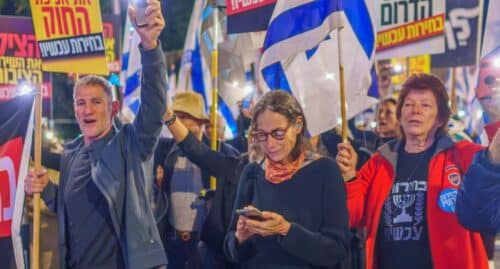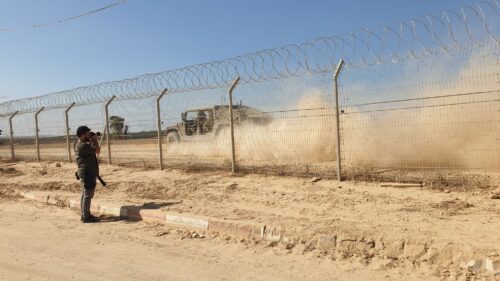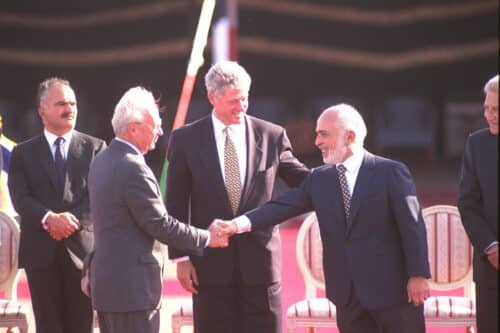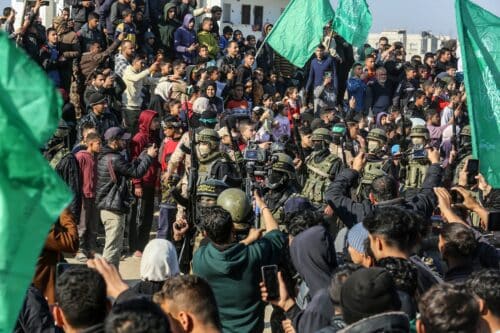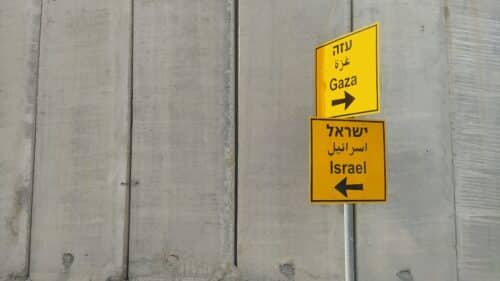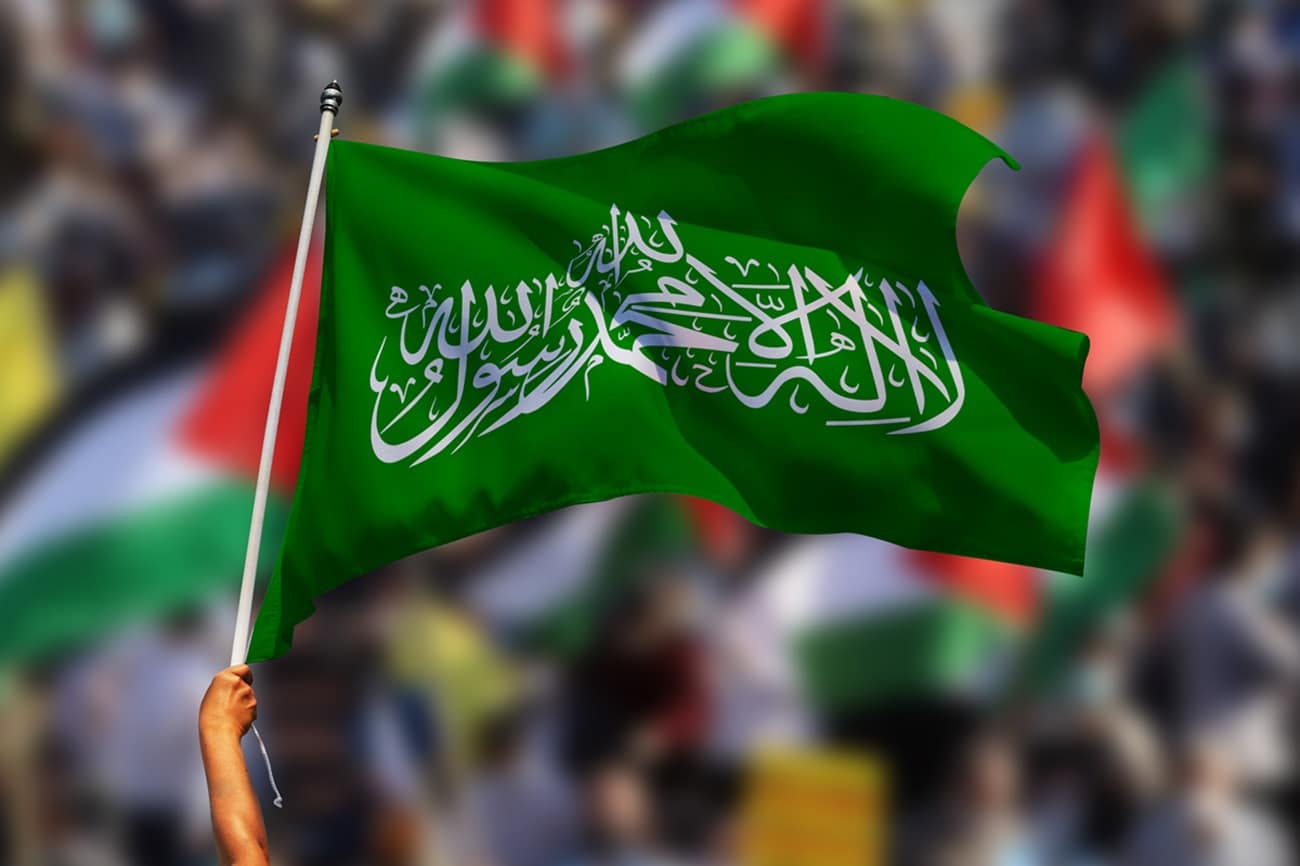
Thus for example, the Ottoman occupation of Constantinople in 1453 put an end to the great Byzantine empire; the conquest of Jerusalem by the British in 1917 was the death knell of 400 years of Ottoman rule not only in the city – but in the entire territory of Israel. The conquest of Berlin in 1945 and the hoisting of the Soviet flag over the Reichstag symbolized the allied victory over Nazi Germany – and the examples go on.
When this method is examined in the context of the current war, the question presents itself: where is Hamas’ center of gravity? In other words: what center do we have to attack in order to bring the entire organization to its knees?
Sadly, the answer is that there is no single such place that can achieve the decisive blow. Since Hamas is not a country, since it is a terrorist organization, it operates in a distributed mode. It disperses its government centers and its senior operatives in various locations and even in separate countries.
In the Gaza Strip as well, being Hamas’ primary operating base, the organization does not have one, but three, centers of gravity: Gaza, Khan Younis and Rafah. Each one of these centers has its own important function. Only by gaining control – military and civil – over all three of them, can the Hamas government be toppled.
Gaza City: The political center of gravity
Both during the Palestinian Authority’s period and also now under Hamas, Gaza City has served as the center of government. It is the largest city in the Strip, this is where the government ministries, the parliament and the supreme court reside. The al-Rimal neighborhood, which is the Gaza Strip’s luxury neighborhood, home to its rich and powerful, is located in this city.
One might have expected that Gaza City would enjoy an elevated status, however in reality the city itself is overpopulated and is surrounded by crowded refugee camps such as Zeitoun, Jabaliya and Shati. This congestion complicates the city and makes it difficult to attack. Nevertheless the IDF marked it as its first goal.
There were two main reasons that drove the decision to begin with Gaza City: the first one is that the city is located in the northern part of the Strip and is close to Israeli population centers. It was therefore important to attack it to impair Hamas’ ability to launch rockets into the depth of Israeli territory or to launch yet another onslaught. The second reason, no less important, concerns the city’s administrative function and the symbolic value of occupying Hamas’ government institutions.
The military operation in Gaza City was a success, however the importance of taking the city was less than we had expected. First of all because, as mentioned earlier, conquering the city alone is insufficient for breaking Hamas. Besides, the occupation was not fully completed. Although the IDF holds the city militarily, it is avoiding taking responsibility for the civilian aspects as well. As of today Hamas still maintains a measure of control over the city – and as long as this is the case, we will be unable to create a different reality there.
Khan Younis: The Military Center of Gravity
Khan Younis is the second-largest city in the Strip with a centuries-long history. It was established back in 1389 by the Mamelukes. Since then it has been the scene of some important battles – the most famous among them in 1517 when the Ottomans conquered the city, thereby triggering the conquest of the entire territory of Israel. This means that this city has always been perceived to be a highly-important strategic target.
Besides its historic value, Khan Younis is also the cradle of Hamas as a movement. Most of the organization’s leadership grew in the city’s refugee camp. To this day the organization regards it to be one of its key centers and therefore it built an alternative government center there, which includes military war rooms. This is precisely the reason that when the IDF began operations in Gaza City, Hamas had no problem withdrawing and regrouping in Khan Younis and directing the battle from there.
In IDF terms, the battle for Khan Younis was exceptional, since it pitched in seven brigades simultaneously. This is an exceedingly large force, which is in itself proof of just how heavily fortified the city was, and how difficult it had been to wage battle there. As expected, the fighting in the city took time but ultimately the IDF overcame the Khan Younis Brigade and managed to destroy Hamas’ main war room and it dealt a severe blow to the organization’s command and control capabilities. This being said, since Hamas is highly flexible and adept at finding alternative solutions, it retreated to Rafah, and to this day it is proving that it is capable of waging its battles from there.
Rafah City: The Economic Center of Gravity
Rafah is the last Hamas stronghold. The organization has an entire brigade there, which includes four battalions and, apparently, this is where the organization’s leaders are and our hostages are being held. Besides, this is where a flourishing smuggling industry operates, generating sizable amounts of money into Hamas’ coffers, which serve as the economic foundation for its force building. It is therefore Rafah where all the war’s objectives are concentrated: reaching the Hamas leadership, destruction of the organization’s last remaining brigade and severing its financial lifeline, freeing the hostages, shutting down the Philadelphi Corridor and destroying the tunnels.
The city of Rafah is the southernmost in the Gaza Strip, and perhaps the most complicated. To understand the city’s complexity, one has to go back to 1906 – the year the Ottomans and the British agreed on partitioning the city in two. This decision divided the city between the Gazan Rafah and the Egyptian Rafah. It effectively split entire clans.
In 1948 the city – both halves of it – came under Egyptian rule, but in the Six-Day War we conquered and occupied it. For several decades the 1906 partitioning ceased to be relevant. However following the peace accords with Egypt in 1979, the city once again became partitioned in accordance with that decision from 1906. Except that this time half of it remained under Israeli rule and the other half came under Egyptian rule. Three years later Israel widened the area that separated between the two parts so as to prevent terrorism and smuggling. This is how the Philadelphi Corridor came into being.
Up until the Oslo Accords, Israel ruled both Rafah and the Corridor, however when the Accords were signed, Israel relinquished its rule over the city. This concession spurred the development of a thriving tunnel and smuggling industry, accelerating the escalation of terrorist activity. This trend reached its climax in 2004, with the two APC disasters and with the blowing up of the JVT Stronghold. At this point it became clear Israel had lost control over what was happening in the Strip and in Rafah in particular. Instead of rectifying the situation, the government chose to embark on a unilateral disengagement from the Strip. Ever since the Disengagement Plan in 2005, terrorist attacks from Gaza increased even further. In 2006, IDF soldier Gilad Shalit was abducted from the Kerem Shalom region near Rafah, and a year later Hamas seized control over the entire Strip. At the same time the tunnel industry continued to develop. It grew into a project that generated billions of dollars every year. This was the fertile ground for Hamas’ increasing power. It transformed from a small-scale organization into a fully-fledged terrorist army – an army that succeeded in perpetrating the worst atrocities we have seen since the Holocaust.
One can go into much further detail on the history of Rafah City, however nowadays its key feature, the one that exerts the most powerful influence over its wartime status, is its being a commercial center and the focal point for smuggling. Due to its location close to the Sinai Peninsula, the city is the connecting link between Gaza and Egypt. This is where all manner of smuggling takes place. Whatever cannot be brought into Gaza through official channels enters via the tunnels that have been dug beneath the city or via the Rafah Crossing – anything, including armaments and terrorists.
ever since the war broke out, Hamas has continued to build its force through armaments and manpower passing through the city’s tunnels. This force-building has an impact on the entire progress of the war and is costing us dearly in lost lives. We ought to have severed this pipeline called Rafah already at the start of the war but, having failed to do so, we must now operate there in full force.
Winning is not the end-game: Toppling Hamas as a governing entity requires assuming responsibility for the civilian aspects
It is clear that toppling the Hamas regime will only be made possible after completely overrunning all the organization’s centers of gravity, including the city of Rafah. However, our goal is not limited solely to toppling this organization. We also intend to prevent any likelihood of its future resurgence.
To ensure Hamas cannot regain its strength and seize power again, we have got to not only sever its links to its financial lifelines, we must also establish a functioning alternative government immediately after the cessation of hostilities, one that will address every civil and humanitarian aspect of life in the Gaza Strip. Since it will be a lengthy process of finding such a suitable leadership, the IDF will, initially, be called upon to administer the Strip while at the same time seeking suitable partners from within the local leadership. It must be noted that the concept of a civil administration is perceived mostly as a negative idea, however such an administration has many advantages and it can also be strategically beneficial for Israel.
There is no doubt the Israeli government and the IDF have many challenges in store for them, and it will take years until we see peace and stability in the Strip, however in the meantime our goal is one: complete conquest of the city of Rafah – Hamas’ last administrative symbol, and the arena in which the entire war will be won.

